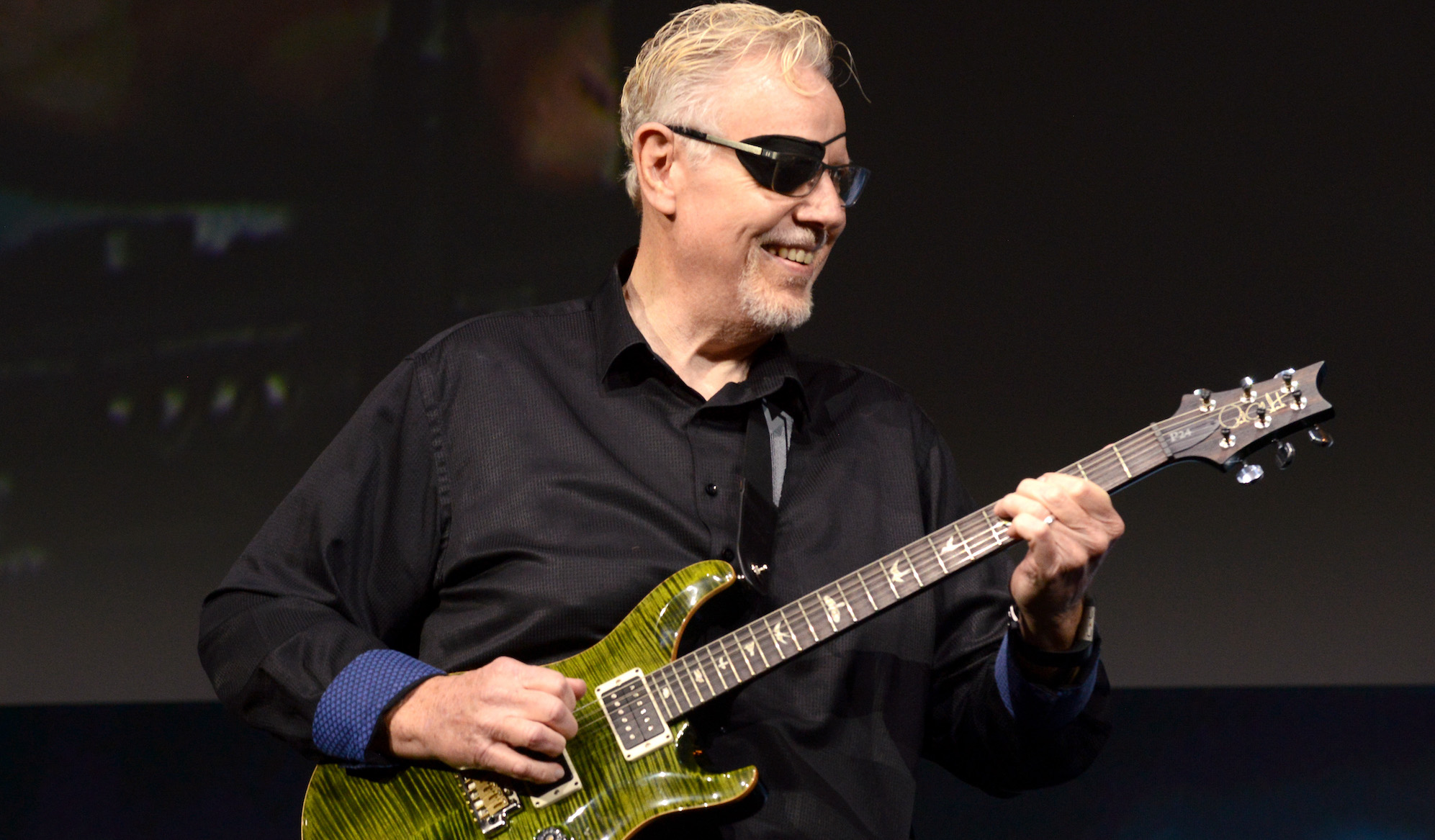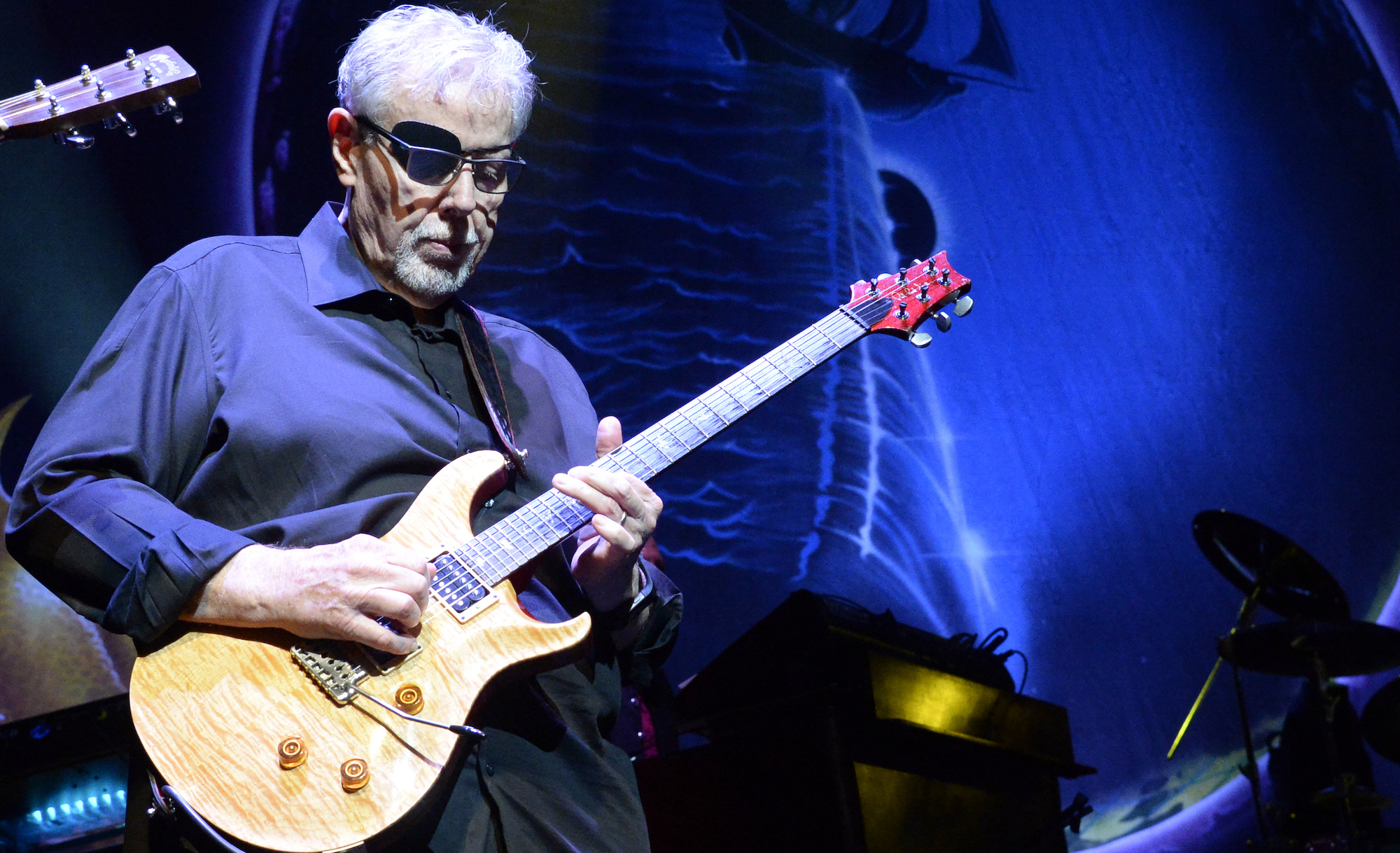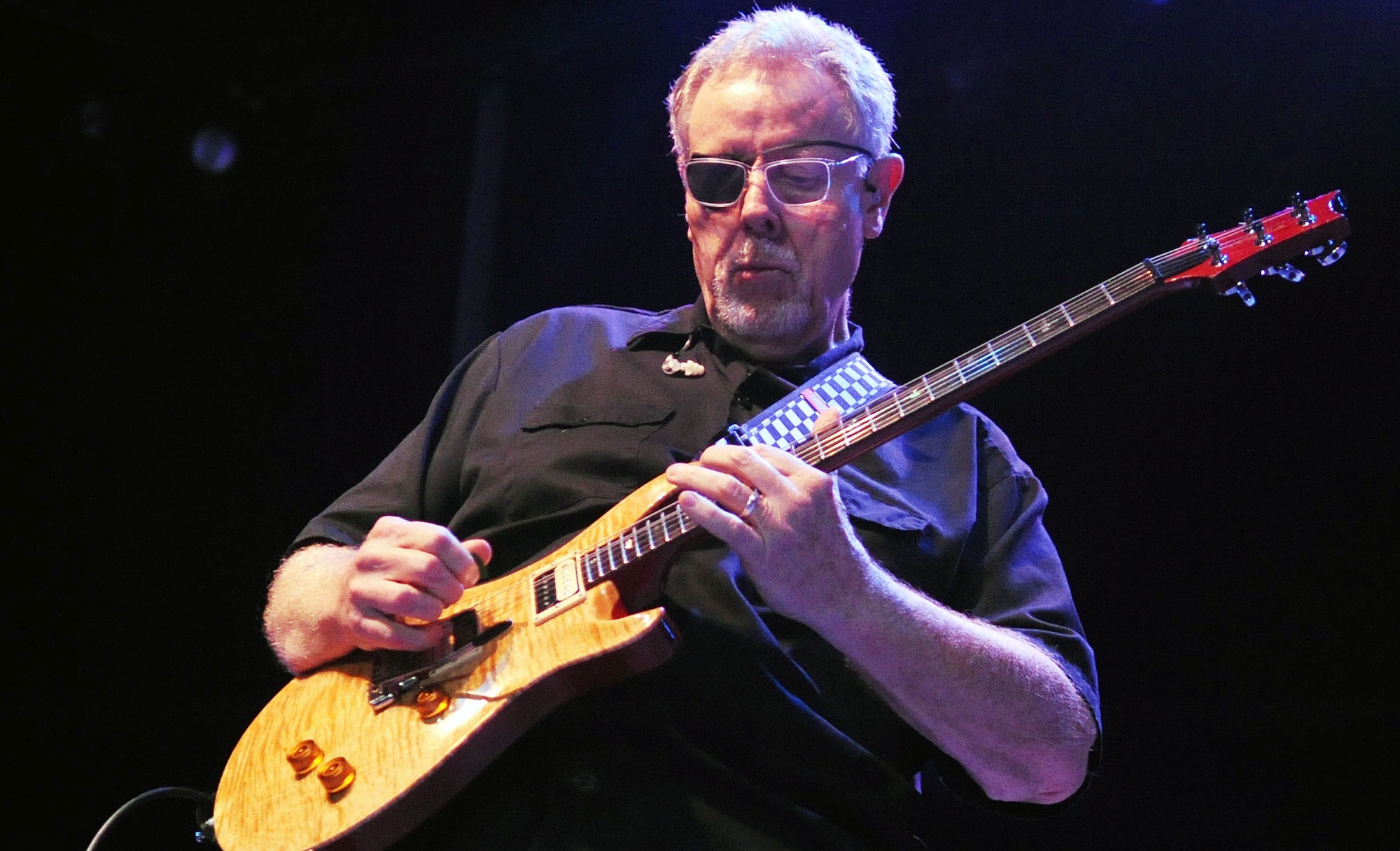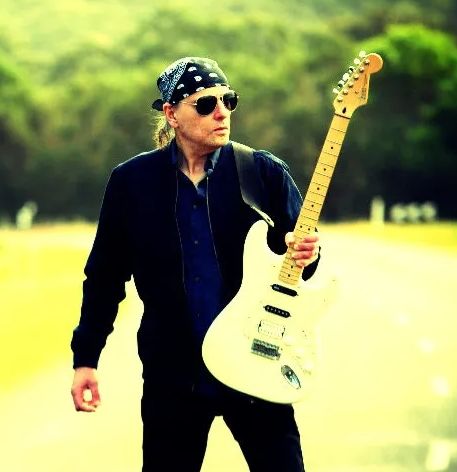Kansas' Rich Williams: "Strats are a mystery to me. I’d watch guys like Eric Johnson play a Strat and get such a beautiful sound, yet when I pick it up, it just sounds horrible!"
The prog-rock guitar titan discusses putting PRS pickups in his Dean Cadillac, what he learned from Steve Morse, and why Kansas made him get rid of his ES-335

One of America’s preeminent progressive rock outfits, Kansas, are celebrating their 50th anniversary this year, with the band set to hit the road in June for an extensive tour. Kansas also recently released a three-CD, career-spanning collection titled Another Fork in the Road – 50 Years of Kansas.
Guitar World recently sat down with the band's longtime guitarist, Rich Williams, to discuss the guitars he connects with (and the ones he doesn't jive with), the making of Dust in the Wind, and the importance of keeping to a learning mindset.
Kansas’ blending of violin, synths and guitars was a much more orchestral approach than the usual straightforward rock and roll format of many bands of the time. How did you approach arrangements in that context?
"With the violin, we didn’t want it to be fiddle. We wanted it to be part of the sound. Robby [Steinhardt] would be playing a violin part and I'd be playing a harmony with him and maybe a synthesizer would be playing the third part of the harmony, too. So, we’d be creating like a string section of sorts – as if we were writing it for an orchestra – but we were still bashing the crap out of it. So, it was that approach to orchestrating with a violin.
"Had we not had [just] one, we might not have done it that way and we would have sounded different. Jethro Tull was a good example of showing you that you could add a delicate instrument to a really cool band and make it work."
The interaction between those instruments really gave the music a harder edge. Was that something that evolved naturally or something that you purposely set out to do?
"Prior to Kansas, Dave Hope [bass], and I had played together previously in a band. And we were playing the rock hits of the days and because none of us were trained, we didn’t understand a delicate approach to anything. Phil [Ehart] would beat the crap out of the drums, while Dave was an aggressive bass player and for me it was crank it up and play it aggressively! That was our approach to it.
All the latest guitar news, interviews, lessons, reviews, deals and more, direct to your inbox!
"We had grown up with Mitch Ryder and The Detroit Wheels and bands like that, American blue eyed soul rock and roll. So those were our roots. But the progressive movement coming out of Europe and England was very eye-opening to us. And what we learned from that was to think outside of the box."
During the band’s mid-1970s period, you mainly played a Gibson L6-S.
"The guitar was straight out the box, too. I did do a little work to it eventually where I moved the input jack to the bottom instead of the front, sort of vice-versa. I still had the six-way switch on it, and I think I might have added a tone control, too, where there was a switch. It's been that way for so long, and I still have it.
"Those guitars have such small necks. I had another one, too, but I didn’t like it. Kerry [Livgren, Kansas's former singer/guitarist] tried one and he didn't like it either. The one I have has very large inlays – big square ones, the same as the size of the Les Pauls inlays. Instead of the round shape, the ones on mine are square though. I’ve never seen another like it, so it might have been a prototype."
Do you favor five-way switching on your guitars?
"Yes, I do, though I do have a PRS McCarty that has a three-way switch on it – I’m more comfortable with a five-way on PRS guitars. I really like [five-way switches] because it’s like going back to using the L6-S, but with the sound choices that are more like the Les Paul. Having said that, sometimes I do like the Les Paul better because of the ease of the switch."
Have you ever tried switching over to a Strat?
"After the Gibson, I did buy a Strat, but I've never been a Strat guy. They’re such a mystery to me. I’d watch guys like Eric Johnson play a Strat and it's got such a beautiful sound, yet when I pick it up, it just sounds horrible! It truly was not designed for me, but I did use it on a few things.
"The Les Paul-style setup – from a PRS to a Les Paul to my Dean guitars, all of those, that's where I feel more at home."

You have also played Dean guitars.
"After the L6-S, I started using Dean guitars. Prior to the L6-S, I was using an ES-335 but the band thought it was a cowboy guitar. And because we were not a cowboy band, they made me trade it for that L6-S. The L6-S was probably worth $500, while the ES-335 was probably worth $25,000! [laughs]"
You first started using PRS guitars back in the 1980s, and you've played them ever since – what prompted the switch?
When Paul Reed Smith was first getting started, I convinced him to put his pickups into my original series Dean Cadillac… Finally, one day Paul said, ‘Why don’t you just get one of my guitars?’
"When Paul Reed Smith was first getting started, I convinced him to put his pickups into my original series Dean Cadillac. So, I used that for a while. I had another red Dean which I had as a spare, yet never used it. Finally, one day Paul said, ‘Why don’t you just get one of my guitars?’, and so I did.
"I have the first year Dragon model, No. 36. My PRS is my go-to guitar. I also have two 2012 Les Pauls, the Lee Roy Parnell models with the classic pickups in them. I love those guitars."
In the early days of the band, you hardly used any effect pedals – it was mostly guitar into amp.
"Yes, that’s correct. My guitar went into my 100-watt Marshall, which I still have today. I did incorporate a volume pedal at one point too because there were so many quick changes, I needed a quick volume change, too. I also had a Mu-Tron Phasor at one point, but apart from that, there were never any effects used in the early days at all – my guitar never went into any distortion boxes of any kind.
"Eventually, I started going into a Furman PL Plus Power Conditioner and slamming the front end of the Marshall, but it was so noisy. I could use it in the studio, but I couldn’t use it in a live performance. For the past 10 years, I’ve been playing with a Fractal Axe-Fx III – it was only [after I bought it] that I started getting into using more effects."

Have you got a large guitar collection?
"I used to have a lot more, but an ex-wife made me get rid of a lot of them. I currently have about 40 guitars."
I want to ask you about one of the band’s signature songs, Dust in The Wind. Guitar-wise on that song, there are actually two differently tuned guitars – one in standard tuning and the other in Nashville tuning, correct?
"Yes, and with the Nashville tuning you usually need to replace the four lowest strings with thinner strings and tune them an octave higher. Now that’s hard to do because you’ll end up breaking five strings before you can get one to hold. Later, I started using a little Taylor three-quarter size guitar and found that I could get that string up there a lot easier.
"So, for Dust In The Wind, I double-tracked a Martin D-28 acoustic twice and then I did the high string part and added that on top of it. I think I also double-tracked that, too. Then a nylon-string, which was played by Kerry, added just a bit more body, and a digital delay was also added on later. There were at least seven guitars on there. The Nashville tuning was just mixed in so that it added this nice sparkle to the track."
Adding Steve Morse to Kansas in 1986 really brought another dynamic to the band. What was it like having him in the band?
"When we first started rehearsing in Phil’s basement, I was sitting down with Steve and he had just been awarded the best guitar player ever for the third year in a row, and was now in the Hall of Fame. And here I am, in a room with him and we’re creating material together. For me, that was a terrifying experience, until I got to know what Steve was like. He’s the least threatening and intimidating guy you could ever meet. He’s a guitar wizard.
"I also learned a lesson from him that I thought was very valuable. We were on the road somewhere, had just done a show and walked into the hotel lobby and there was this crappy band playing in the lounge. I was about to make a joke about it when Steve turned to me and said, ‘Did you see what the guitar player just did there?’ It was something that the player did with his toggle switch. Steve said he had never seen anybody do it that way before.
"I thought, ‘He is the best guitar player in the world, and he is still always learning.’ He was looking for something that was different, like this kid did in that band. And I thought that, as a guitar player, it was such a great mindset to have."
Did you ever think you’d be here and still touring 50 years later?
"We’ve kind of perpetually toured, but we never would have imagined we’d get 50 years. We thought we might get four or five good years and then I would go back to Kansas and maybe buy a bar, have a little stage there and play with my friends. But it just kept going.
"You know, those smallest little details, all those mini-steps have now taken us 50 years. It wasn’t a plan so much; it was just the simple motion of moving forward."
- Another Fork In The Road – 50 Years Of Kansas is available now via InsideOut Music.
Joe Matera is an Australian guitarist and music journalist who has spent the past two decades interviewing a who's who of the rock and metal world and written for Guitar World, Total Guitar, Rolling Stone, Goldmine, Sound On Sound, Classic Rock, Metal Hammer and many others. He is also a recording and performing musician and solo artist who has toured Europe on a regular basis and released several well-received albums including instrumental guitar rock outings through various European labels. Roxy Music's Phil Manzanera has called him, "... a great guitarist who knows what an electric guitar should sound like and plays a fluid pleasing style of rock." He's the author of Backstage Pass: The Grit and the Glamour.

